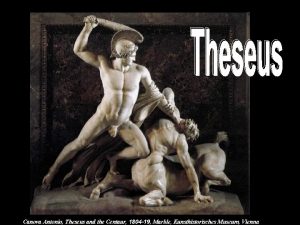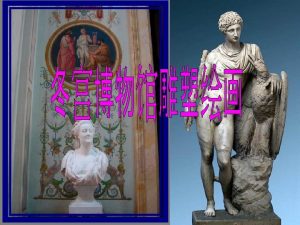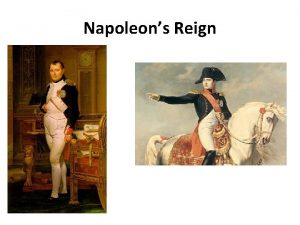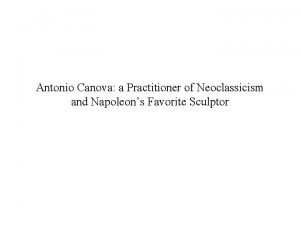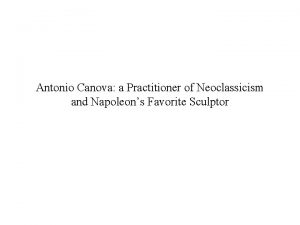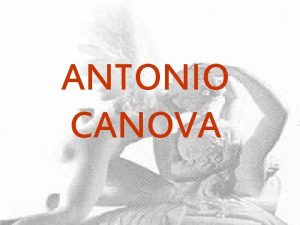Antonio Canova a Practitioner of Neoclassicism and Napoleons











- Slides: 11

Antonio Canova: a Practitioner of Neoclassicism and Napoleon’s Favorite Sculptor Canova specialized in two types of work: grand public monuments for Europe’s leaders and erotic, mythological subjects such as Cupid and Psyche, for the pleasure of private collectors (Stokstad, 952 -953).


Antonio Canova Cupid and Psyche 1787 -1793 marble Was this sculpture created for a public or private setting? How can you tell? Connect it to: Donatello David (front view) c. 1430 bronze

Antonio Canova Cupid and Psyche 1787 -1793 marble

Antonio Canova Napoleon as Mars the Peacemaker 1803 -06 marble, height 326 cm Wellington Museum Apsley House, London Was this sculpture created for a public or private setting?

Antonio Canova Perseus with the Head of Medusa 1804 -1806 marble Metropolitan Museum of Art, New York

Antonio Canova Perseus with the Head of Medusa Caravaggio Head of Medusa 1598 -1599

Antonio Canova Theseus and the Centaur 1804 -19 Marble, height 340 cm Kunsthistorisches Museum, Vienna Was this sculpture created for a public or private setting?

Centaur and Lapith The Parthenon, metope relief c. 440’s BCE This sculpture from the Parthenon shows a Centaur rearing triumphantly over a dying human Lapith.

Paulina Borghese as Venus Victrix 1804 -08 white marble

detail: Pauline Borghese as Venus 1804 -08 white marble Not a shy woman, Napoleon's sister commissioned this sculpture of herself. She demanded to be represented as the goddess of love. Her husband, Prince Borghese, was the work’s official patron; he kept this sculpture hidden away in their villa in Rome. People were allowed to look at it only by torchlight (see Gardner, 853 -854). This sculpture added to Pauline’s already fairly notorious reputation. The fact that everyone knew about the sculpture and few had seen it, only added to the sculpture’s fame. This is a work that represents an idealized vision of the female form, but Canova has also labored hard to represent the accompanying details of the couch and pillows with extraordinary naturalism.
